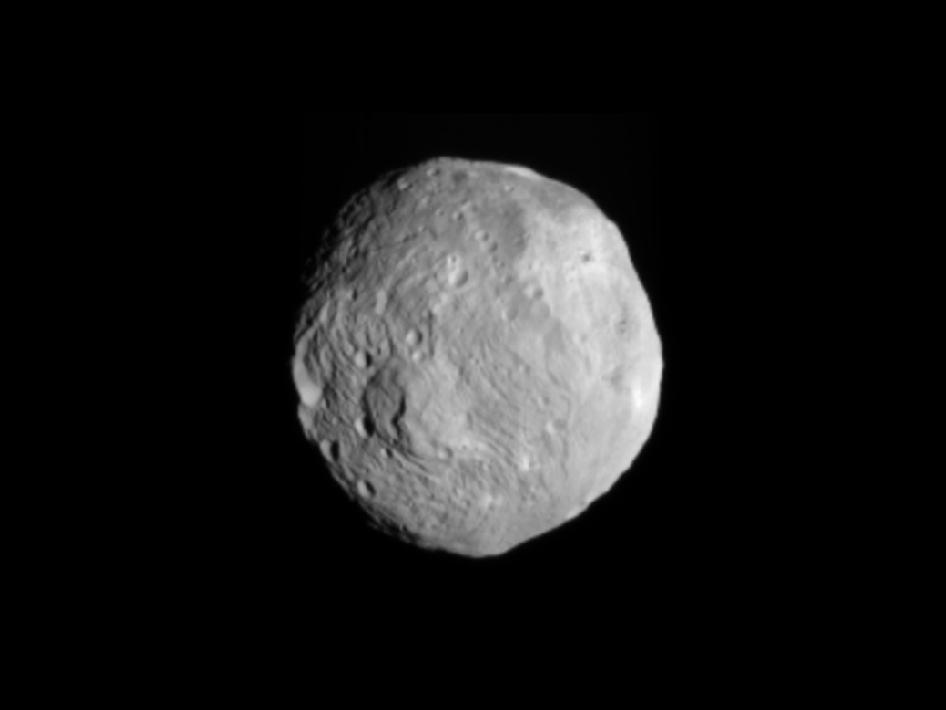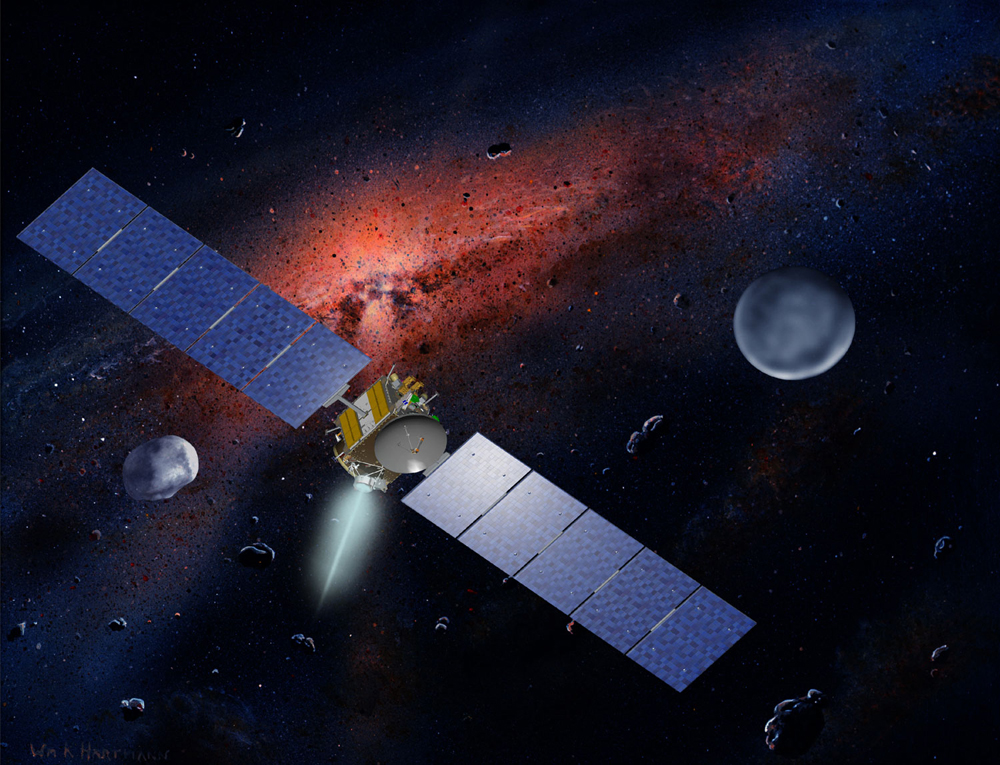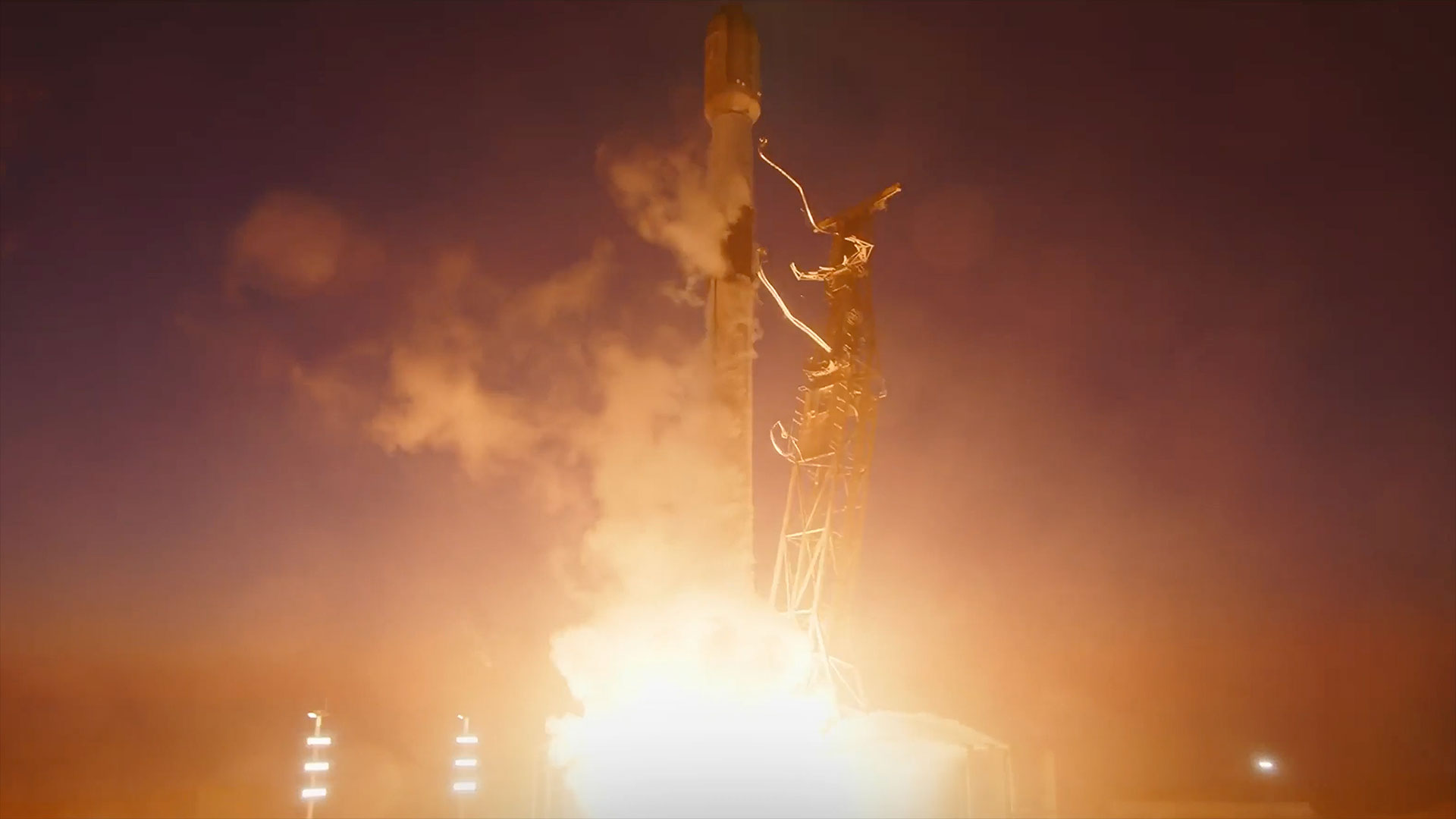
NASA's Dawn spacecraft should now be circling the massive asteroid Vesta — if everything went according to plan.
Dawn was slated to slip into orbit around Vesta, the second-largest object in the main asteroid belt, at 10 p.m. PDT Friday (July 15; 1 a.m. EDT Saturday). So the probe has likely begun its yearlong orbital mission at the huge space rock, but scientists will have to wait a day or so to find out for sure.
Dawn has been thrusting with its ion engines for several days straight. The probe generally cannot communicate with mission controllers while it's thrusting, because its antenna is pointed away from Earth during these stretches.
But the spacecraft is due to re-orient and check in with the mission team at about 11:30 p.m. PDT Saturday (2:30 a.m. EDT Sunday), researchers said.
That contact will be "the first point we can say OK, we can confirm that we thrusted the way that we expected to, and that we actually are captured at that point," said Dawn project manager Robert Mase, of NASA's Jet Propulsion Laboratory in Pasadena, Calif. [Photos: Asteroid Vesta and NASA's Dawn Probe]
Even if something went wrong and Vesta did not capture Dawn late Friday, mission scientists would not panic. They could just try again, since Dawn has simply been pacing Vesta in its orbit around the sun.
"We've always got the ability to catch up," Mase told SPACE.com.
Get the Space.com Newsletter
Breaking space news, the latest updates on rocket launches, skywatching events and more!
The $466 million Dawn mission is the first one ever to make a prolonged visit to a large asteroid. And Vesta is indeed large; at 330 miles (530 kilometers) across, it's so big that many astronomers classify it as a protoplanet. Vesta would have continued growing into a full-fledged rocky planet like Earth or Mars, scientists say, if Jupiter's gravity hadn't stirred up the asteroid belt long ago.
Dawn will study Vesta from above for a year, scrutinizing the space rock from three different orbits. Then, in July 2012, it will move on, heading for the dwarf planet Ceres. At 590 miles (950 km) wide, Ceres is the largest body in the main asteroid belt between Mars and Jupiter.
Dawn will perform similar investigations at Ceres. The mission's main goal is to compare and contrast Vesta and Ceres, which are very different objects despite occupying relatively similar regions of space. Ceres is more primitive and wet, possibly harboring water ice, while Vesta seems to be more evolved and drier, researchers have said.

The spacecraft's observations could help researchers learn about the solar system's early days, as well as the processes that formed and shaped rocky planets such as our own.
NASA approved the Dawn mission in 2001, canceled it in March 2006, then reinstated it just weeks later. The probe launched in September 2007 and has covered more than 1.7 billion miles (2.7 billion km) since.
You can follow SPACE.com senior writer Mike Wall on Twitter: @michaeldwall. Follow SPACE.com for the latest in space science and exploration news on Twitter @Spacedotcom and on Facebook.
Join our Space Forums to keep talking space on the latest missions, night sky and more! And if you have a news tip, correction or comment, let us know at: community@space.com.

Michael Wall is a Senior Space Writer with Space.com and joined the team in 2010. He primarily covers exoplanets, spaceflight and military space, but has been known to dabble in the space art beat. His book about the search for alien life, "Out There," was published on Nov. 13, 2018. Before becoming a science writer, Michael worked as a herpetologist and wildlife biologist. He has a Ph.D. in evolutionary biology from the University of Sydney, Australia, a bachelor's degree from the University of Arizona, and a graduate certificate in science writing from the University of California, Santa Cruz. To find out what his latest project is, you can follow Michael on Twitter.
